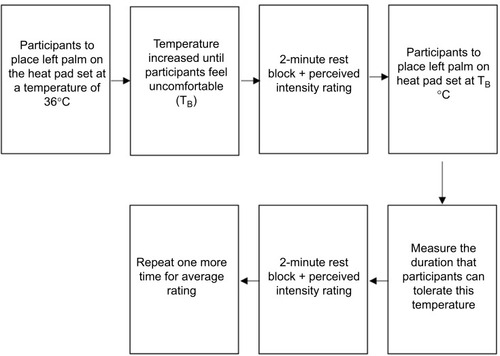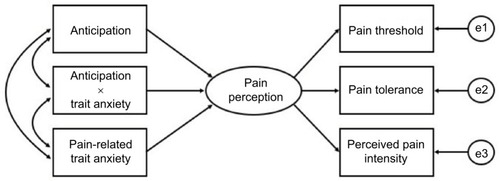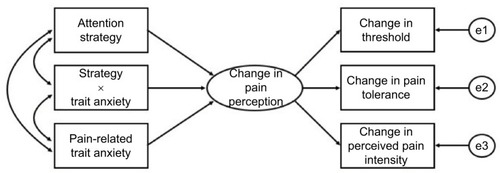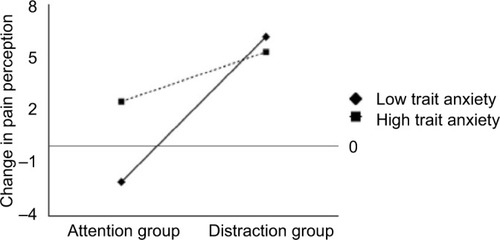Figures & data
Figure 1 Summary of PCP.
Abbreviation: PCP, pain calibration procedure.

Figure 2 Predicted anticipation model.

Figure 3 Predicted attention model.

Table 1 Summary of anticipation model
Table 2 Direction of change in pain perception in attention groups
Figure 4 Interaction between attention task and pain-related trait anxiety.

Table 3 Summary of attention model
